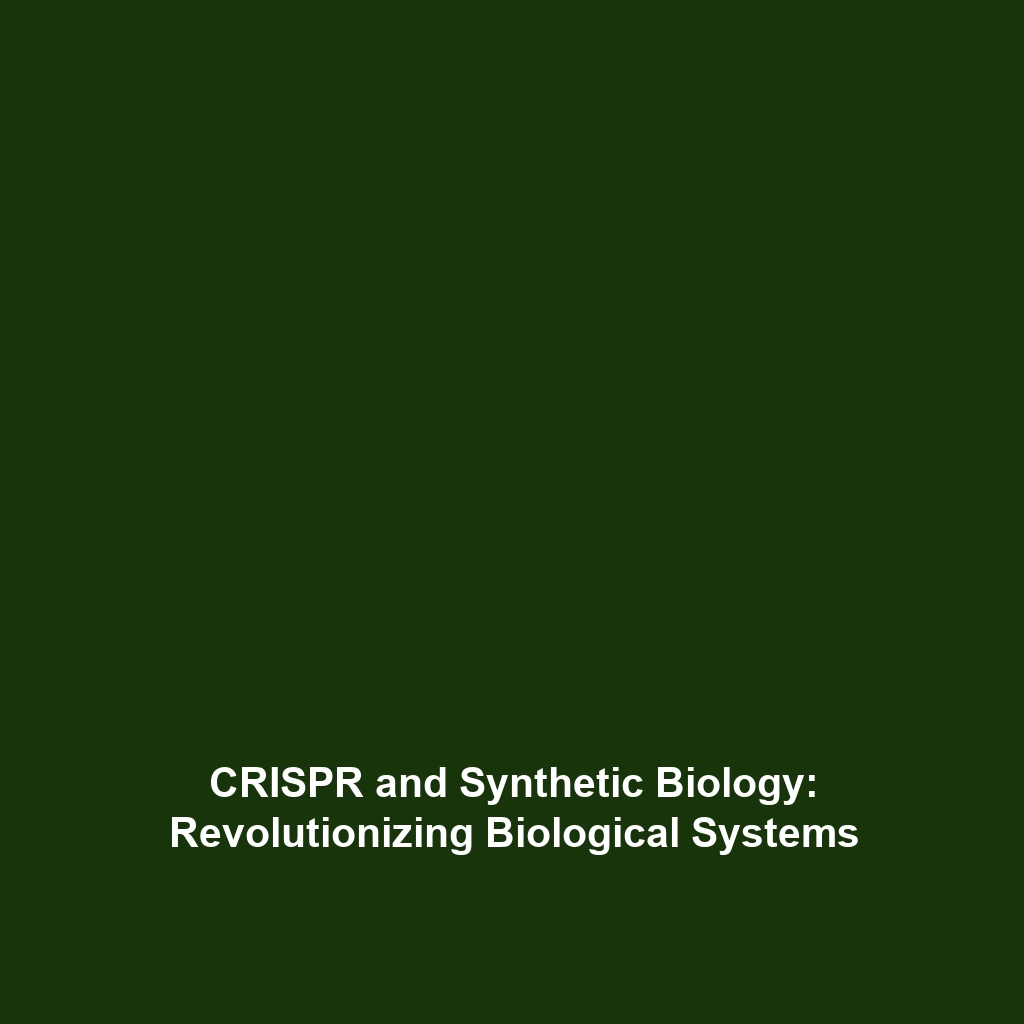CRISPR and Synthetic Biology: Engineering New Biological Systems
Introduction
CRISPR gene editing has revolutionized the field of genetics and molecular biology, allowing for precise modifications within an organism’s genome. When coupled with synthetic biology, the potential to engineer new biological systems emerges, opening new pathways for research and applications. This convergence of CRISPR and synthetic biology signifies a transformative era in CRISPR gene editing, emphasizing the ability to design organisms with tailored functions for various applications, from medicine to environmental sustainability.
Key Concepts
Understanding CRISPR
CRISPR (Clustered Regularly Interspaced Short Palindromic Repeats) is a revolutionary technology that enables targeted editing of DNA. It utilizes a guide RNA to direct the Cas9 enzyme to specific locations in the genome, allowing for precise cuts and modifications.
Principles of Synthetic Biology
Synthetic biology combines biology and engineering principles to create organisms with novel functionalities. This discipline encompasses the design and construction of new biological parts, devices, and systems.
Integration of CRISPR in Synthetic Biology
The combination of CRISPR technology and synthetic biology enables researchers to construct and manipulate biological systems more effectively, leading to innovations in areas like biofuel production, disease treatment, and agricultural improvements.
Applications and Real-World Uses
The integration of CRISPR with synthetic biology has led to several significant real-world applications. Here are a few notable examples:
- Gene Therapy: CRISPR is used to correct genetic defects, allowing for treatment of inherited diseases.
- Biomanufacturing: Engineered microbes are created to produce pharmaceuticals and biofuels.
- Agricultural Enhancements: Crops are modified for better yield and resistance to pests and diseases.
Each of these applications illustrates how CRISPR and synthetic biology can create effective solutions to current global challenges.
Current Challenges
Despite the advancements, several challenges persist in the study and application of CRISPR and synthetic biology. Key issues include:
- Ethical Concerns: The implications of gene editing in humans and ecosystems raise significant ethical discussions.
- Off-Target Effects: Unintended edits may occur, which can lead to unforeseen consequences.
- Regulatory Hurdles: Navigating the legal landscape surrounding genetic modifications presents considerable obstacles.
Future Research and Innovations
Looking ahead, future research on CRISPR and synthetic biology is poised to drive innovative changes in gene editing technology. Breakthroughs are anticipated in areas such as:
- Precision and Safety: Developing enhanced CRISPR systems that minimize off-target effects.
- Next-Generation Tools: Advanced platforms for gene editing that offer greater efficiency and reliability.
- Sustainability Innovations: Engineered organisms designed to aid in environmental restoration processes.
Conclusion
In summary, the integration of CRISPR and synthetic biology is paving the way for groundbreaking advancements in gene editing. With ongoing research and countless potential applications, this field stands at the forefront of scientific innovation. For more insights on CRISPR advancements and applications, visit our related topics page to explore further.
